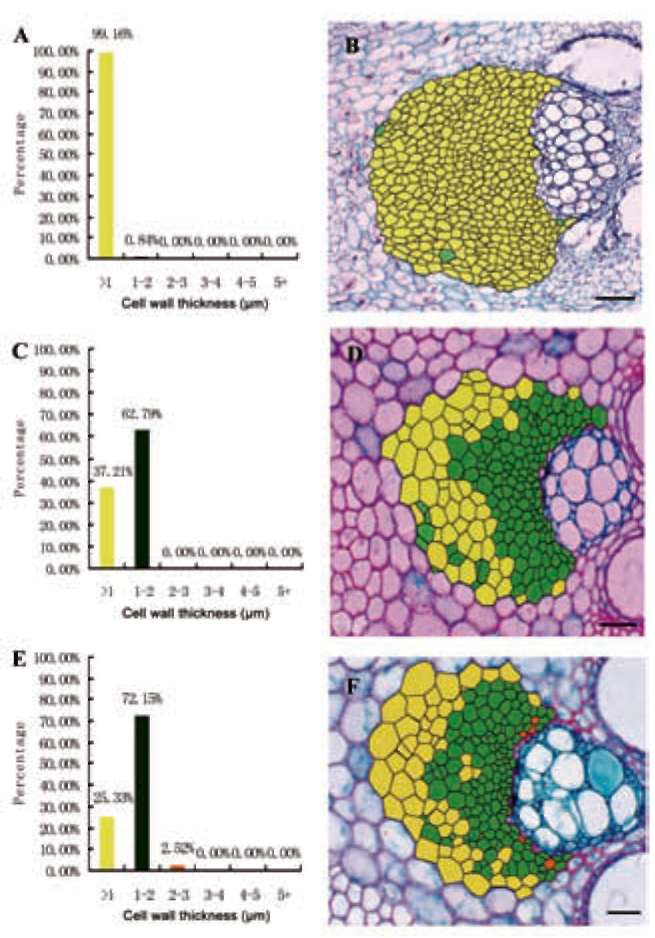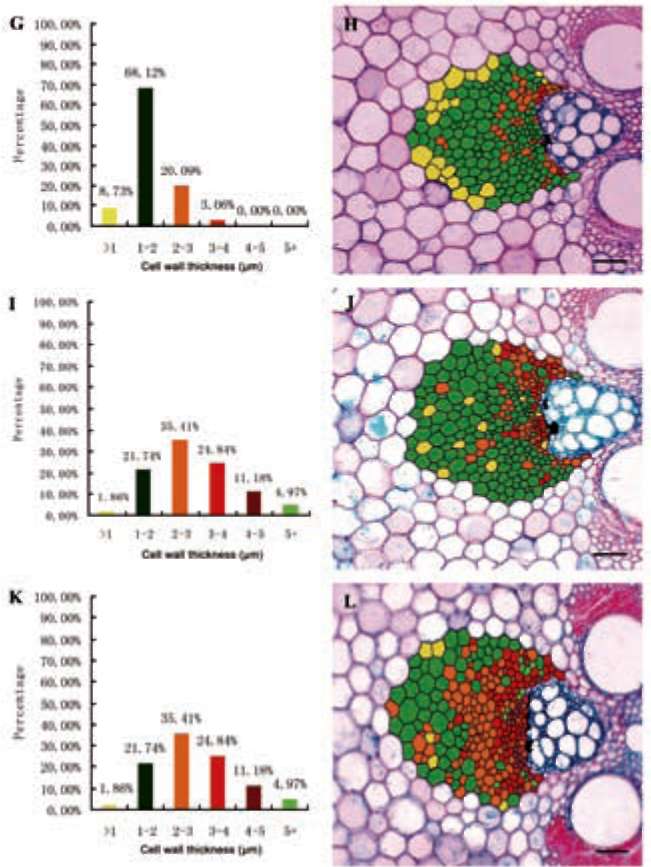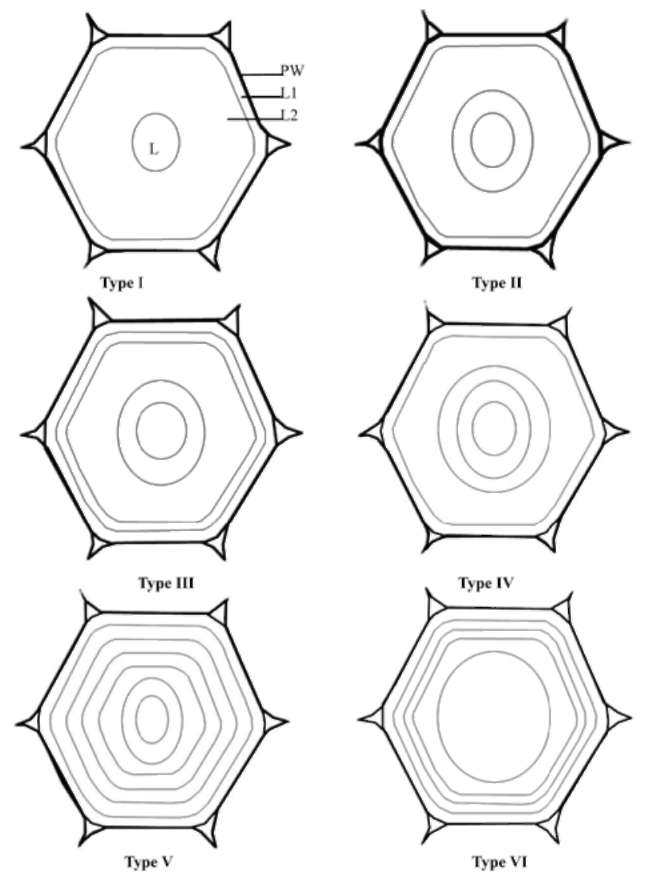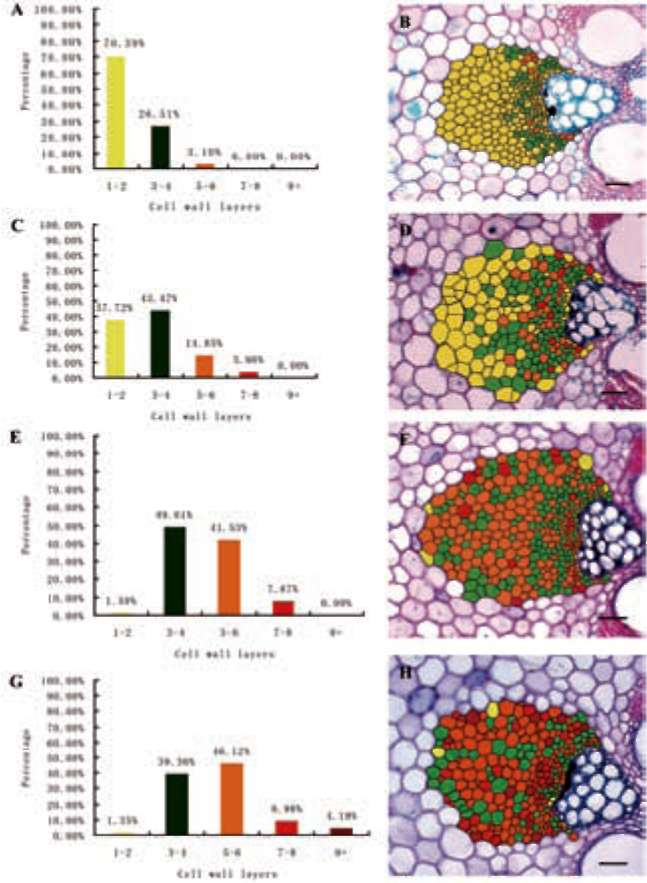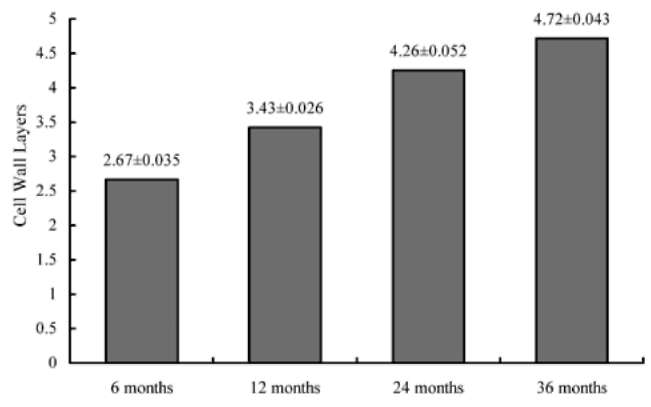WANG et al. ― Developmental changes in cell wall of bundle sheath fibers close to phloem
355

Figure 1. Vascular bundles from the inner and outer culm walls of F. yun-nanensis in 36 months old culms. (A) Open type vascular bundles from the inner culm wall; (B) Semi-open type vascular bundles from the outer culm wall. Mx: metaxylem; P: phloem; Px: protoxylem; BS: bundle sheath. Scale bars = 100 (im.
ity were selected from each age category (Gritsch, 2004). Image of all the fibers in the bundle sheathes as seen in cross-section were captured via a video camera linked to a converted fluorescence microscope (Zeiss Axiovert 200M) and a Lenovo computer. Three images of each bundle sheathes were taken and the cells wall thickness of each fiber cell was measured and marked on the images using the Carl Zeiss Imaging systems, in order to carry out the correlation analysis conveniently.
Cell wall layers for each numbered cell were counted as observed under the microscope using the x100 oil-immersion objective. Data were graphically represented
using Microsoft Excel 7.0 and the correlation between the number of wall layers and thickness were verified using SPSS 13.0.
All images for two-dimensional synthesis were taken using x 10 objective and then were processed using Adobe Photoshop 7.0 (Gritsch, 2003). A printed enlargement was used to trace each cell in the bundle sheath onto tracing paper. The traced drawings of the bundle sheathes were then scanned and overlaid onto the original digital photograph. Fibers were categorised according to the number of cell wall layers (1-2, 3-4, 5-6, 7-8, 9 or more) and a colour was assigned to each category.
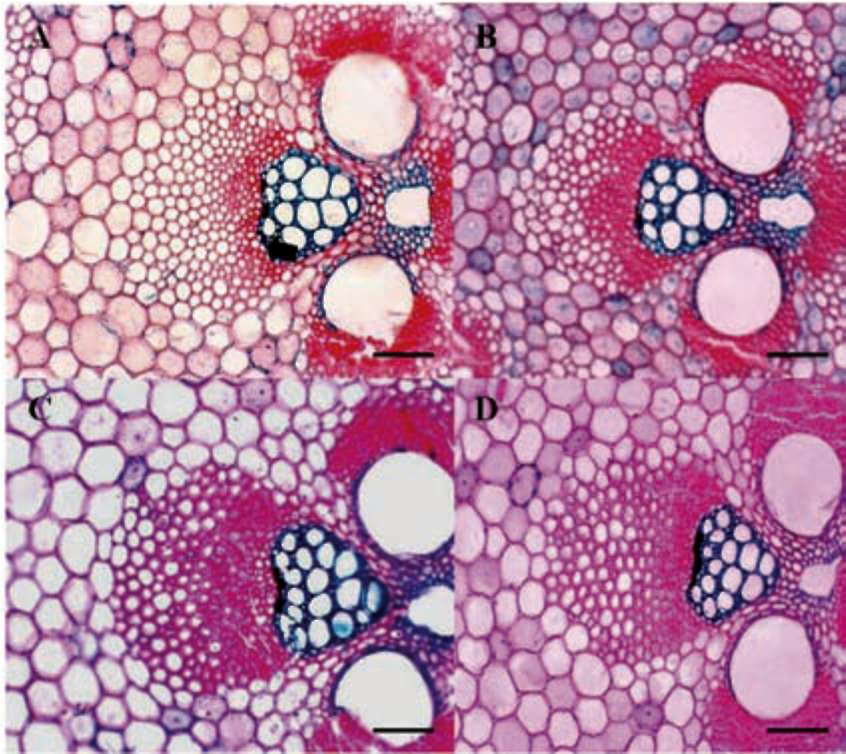
Figure 2. Vascular bundles from the inner culm wall. (A) 6 months old culm (Elongating culm). Fibers with the thickest cell walls are found close to the vascular elements and cells adjacent to phloem remain relatively thin-walled (arrowhead); (B) 12 months old culm (Young culm). The majority of fiber cell walls have begun to thicken; (C) 24 months old culm. Most of fiber cell walls located in the periphery have high potential for further thickening; (D) 36 months old culm. Many fiber cell walls including some immediately adjacent to the phloem still have not reached their maximum thickness. Scale bars = 75 (im.
